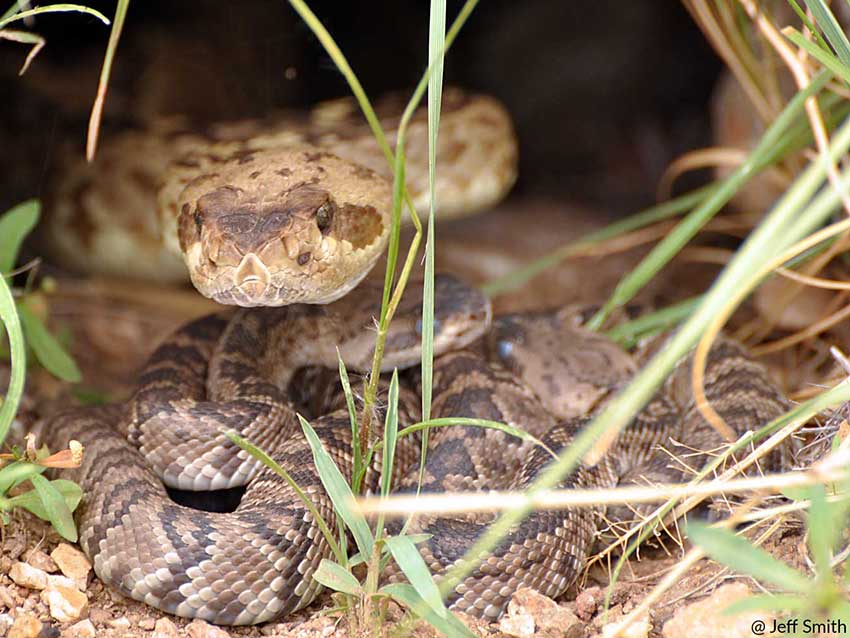
Many Austinites—and newcomers to Texas—often ask for help identifying snakes, usually fearing they’ve spotted something dangerous. But in reality, these often-misunderstood creatures play a vital role in the ecosystem, serving as both predator and prey and helping to keep our planet balanced and thriving.
Last week marked Snake Week, and Melissa Amarello from Advocates for Snake Preservation shared a fascinating deep dive to help us better understand—and truly appreciate—our scaley neighbors.
5 Things You Probably Didn’t Know About Snakes
More snakes = less disease! Snakes eat vectors and carriers of many diseases, including The Plague and Lyme disease.
Snakes are good neighbors! They won’t raid your garden or chew up your wires, but they will eat the critters that do. And due to their non-competitive nature and ability to fast for long periods, Pit Vipers (rattlesnakes, copperheads, cottonmouths) are more effective at controlling prey populations than bird or mammal predators.
Pit Vipers have family values. Some are social, form friendships, and take care of their babies, just like birds and mammals! Pit Viper moms stay with their newborns for a week or two, and will even babysit others’ kids.
Still don’t want Pit Vipers for neighbors? Make friends with other snakes! Kingsnakes, Racers, and other non-venomous snakes eat venomous ones. Others, like Gophersnakes and Bullsnakes, compete with venomous snakes for food.
Getting to Know Your Snake Neighbors
Austin is a snakey place! There are more than 7,000 snake observations in Austin on iNaturalist, a useful tool to learn about snakes and other wildlife in your area. Snakes are variable in color and pattern, but in iNaturalist, you can see what your snake neighbors look like. They also have an app for kids called Seek to identify and learn more about plants and animals without having to create an account or share data.
Most (26) of the 30 snake species found here are harmless and the four venomous species in the area are rarely encountered. Let’s get to know some of the most common ones:
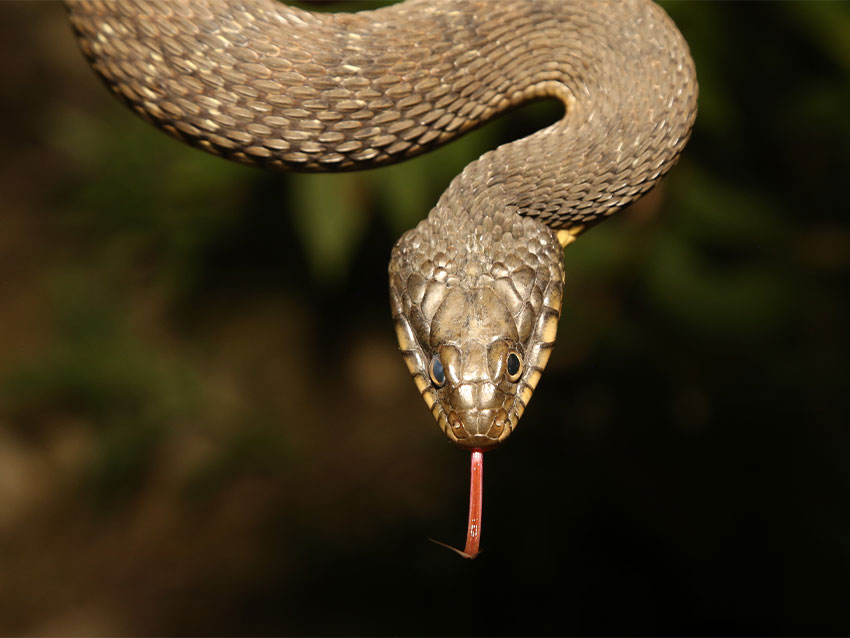 Photographed by Reid Hardin/iNaturalist (CC-BY-NC)
Photographed by Reid Hardin/iNaturalist (CC-BY-NC)
Plain-bellied Watersnakes are the most commonly observed snake around Austin. They are often mistaken for venomous Northern Cottonmouths,* which are rarely observed here (less than 1% of the snakes observed on iNaturalist are Northern Cottonmouths). Plain-bellied Watersnakes can flatten their head into a triangular shape that is associated with venomous snakes, but are non-venomous and completely harmless to people. They spend most of their time in or near water where their primary prey, amphibians and fish, live. If you spot a snake in or near water, that’s likely a Plain-bellied Watersnake.
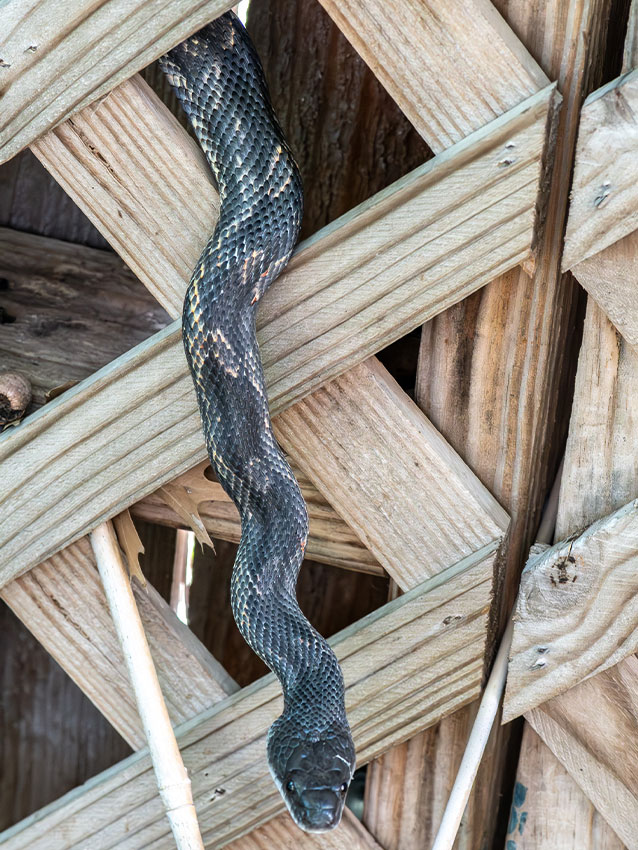 Photographed by Michael Knox/iNaturalist (CC-BY-NC)
Photographed by Michael Knox/iNaturalist (CC-BY-NC)
Western Ratsnakes are the second most commonly seen snake in the Austin area. They are long, slender snakes that are excellent climbers. And as you might have guessed from their name, they provide superb pest-control! So if you see a snake climbing a tree or shrub, that’s likely a Western Ratsnake.
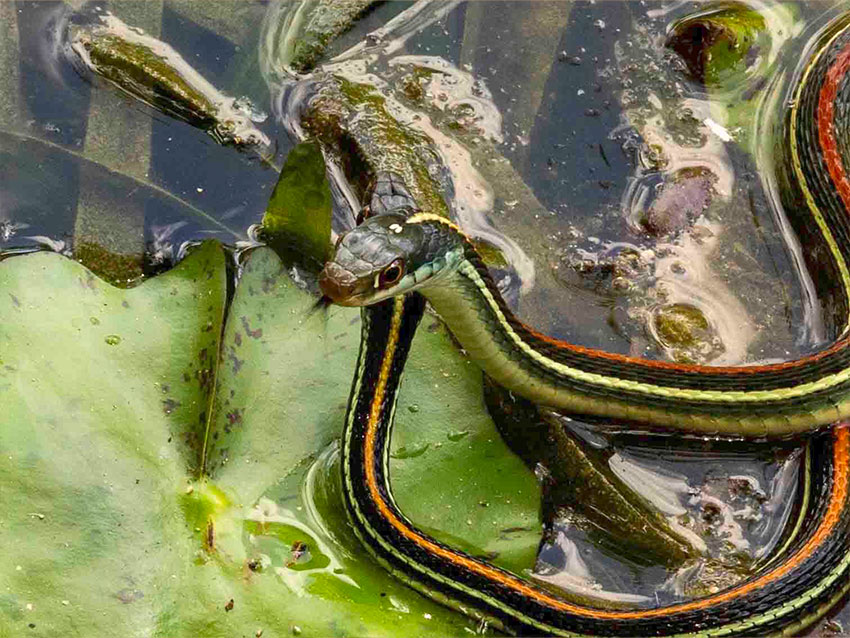 Photographed by lcrabtree/iNaturalist (CC-BY-NC)
Photographed by lcrabtree/iNaturalist (CC-BY-NC)
Western Ribbonsnakes are the most common of the four Gartersnakes found around Austin. They are one of the most colorful with a vivid, orange stripe running down their backs. They are seldom found far from water, but are smaller and more slender than Watersnakes.
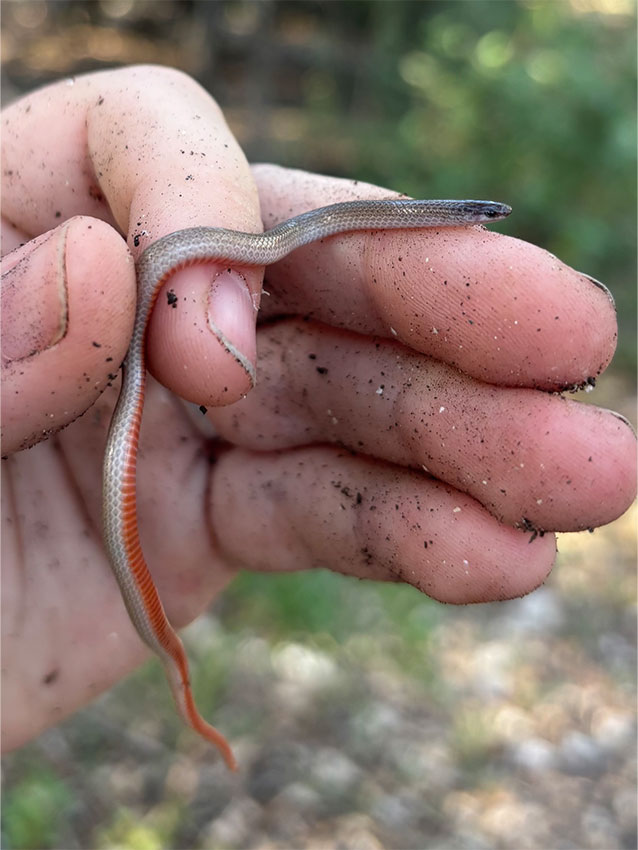 Photographed by salamander_superfan/iNaturalist (CC-BY-NC).
Photographed by salamander_superfan/iNaturalist (CC-BY-NC).
Flat-headed Snakes are another tiny, but tough, snake. Are you scared of spiders, scorpions, or centipedes? Well meet your new best snake friend, because those are the favorite foods of Flat-headed Snakes.
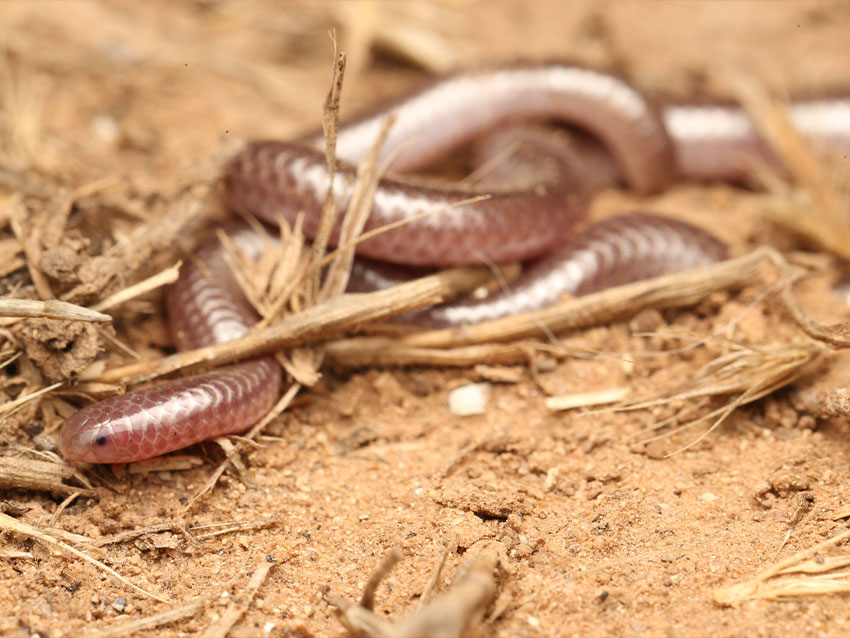 Photographed by Reid Hardin/iNaturalist (CC-BY-NC)
Photographed by Reid Hardin/iNaturalist (CC-BY-NC)
Texas Threadsnakes are one of the tiniest snakes in Texas. They have reduced eyes and poor eyesight, so they rely primarily on scent to find their prey. They spend most of their time underground, feeding on ant and termite larvae. But after a hard rain you may find many on the surface when their habitat floods. Eastern Screech Owls bring live Threadsnakes to their nests, not to feed their babies, but to help clean their nest of parasites — isn’t that cool?
Snake Country Survival Guide
There are 80 species of snakes in Texas and most (68) are harmless. While it’s unlikely the snake that crosses your path is venomous, here are Advocates for Snake Preservation’s top ten snake safety tips:
- Do not approach, handle, move, or kill snakes – most bites happen in these situations!
- Use lights when walking at night.
- Watch where you put your hands and feet.
- Create clear, wide paths throughout your yard for safe walking.
- Don’t feed or water your pets or wildlife on the ground.
- Don’t create shelter for snakes or their prey with debris piles.
- Do not use glue traps or bird netting – they trap snakes too.
- Learn your rattlesnake neighbors’ habits and avoid their areas.
- Welcome non-venomous snakes, such as Bullsnakes and Whipsnakes to your yard – they may make it less inviting to rattlesnakes.
- Observe and enjoy snakes from a safe distance!
How do you tell the difference between venomous and harmless snakes? It’s hard; there are exceptions to every ‘rule’ you’ve heard. To be safe, and have the opportunity to see the most interesting snake behavior, treat all snakes the same: enjoy observing snakes from a distance, use binoculars and the zoom function on your camera to watch and record.
Get the Scoop
Like reading our blog? Get our blog posts delivered via email and follow us on Facebook!